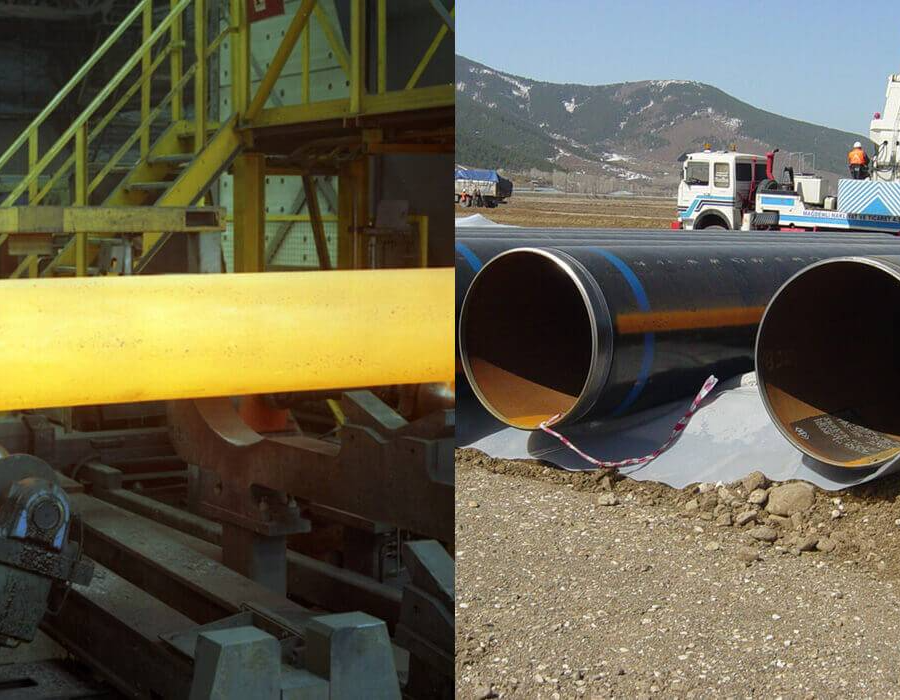Low Temperature Carbon Steel (LTCS) pipes are integral to various industries, especially in systems that operate under extreme temperatures. This comprehensive guide is designed to help engineers understand the specifications, properties, and application areas of LTCS pipes, ensuring optimal usage and safety in critical environments.
What is LTCS Pipe?
LTCS pipes are pipes made from carbon steel alloys that are specifically designed to operate in low-temperature environments. These pipes are crucial in industries like oil and gas, petrochemical, and cryogenic applications, where they are exposed to temperatures below -45°C.
Key Specifications of LTCS Pipes
Understanding the specifications of LTCS pipes is essential for selecting the right pipe for your application. Below are the critical factors engineers should consider:
1. Material Composition
LTCS pipes are made of carbon steel, typically with low carbon content to enhance their ability to maintain toughness at low temperatures. The standard alloy material is ASTM A333, which includes the following:
- Carbon Content: Generally ranges from 0.05% to 0.26%
- Manganese: Up to 1.00%
- Phosphorus and Sulfur: Must not exceed 0.025% and 0.025%, respectively, to prevent brittleness in low-temperature conditions.
2. Temperature Range
The most notable characteristic of LTCS pipes is their performance at low temperatures. LTCS pipes are designed to maintain structural integrity and strength in environments where temperatures can dip as low as -50°C. This makes them ideal for the following applications:
- Cryogenic systems
- LNG transport
- Sub-zero pipeline applications
3. Yield Strength and Tensile Strength
LTCS pipes must maintain their strength even under extreme pressure. The material's tensile strength typically ranges from 55,000 psi (379 MPa) to 75,000 psi (517 MPa), with a yield strength of around 35,000 psi (241 MPa). These values ensure that the pipes can handle stress without failure in extreme temperatures.
4. Impact Toughness
Since LTCS pipes are exposed to low temperatures, their ability to resist impact without cracking is critical. Impact toughness is typically tested through Charpy V-notch tests at temperatures as low as -50°C, with a requirement to withstand high impact loads without becoming brittle.
5. Wall Thickness and Pressure Rating
LTCS pipes come in various wall thicknesses, which are selected based on the application’s pressure requirements. Pipes with thicker walls can withstand higher internal pressures. The pressure rating is often specified based on industry standards such as ASME B31.3 for process piping or ASME B36.10M for welded and seamless pipes.
6. Corrosion Resistance
While LTCS pipes are not as resistant to corrosion as alloy steels, they still require coatings or linings to protect against corrosion in harsh environments. The external coatings, such as epoxy or polyethylene, are often used to enhance the pipe’s ability to resist corrosion when used in outdoor applications or in contact with corrosive chemicals.
Types of LTCS Pipes
LTCS pipes are available in different forms, depending on the requirements of the system. These include:
- Seamless LTCS Pipes: These pipes are manufactured without seams, making them ideal for high-pressure applications. They provide greater strength and durability.
- Welded LTCS Pipes: These pipes are made by welding steel plates together, and while they are generally less expensive, they are more prone to failure under extreme conditions. They are commonly used in lower-pressure environments.
Applications of LTCS Pipes
LTCS pipes find extensive use in industries requiring efficient, durable piping systems under extreme temperatures. Some common applications include:
1. Cryogenic Applications
In industries like LNG (Liquefied Natural Gas) transportation, LTCS pipes are used for their ability to maintain structural integrity at cryogenic temperatures, often as low as -160°C.
2. Oil and Gas Industry
The oil and gas industry requires LTCS pipes for offshore drilling platforms, pipelines, and storage tanks, where pipes are exposed to freezing conditions, high-pressure systems, and corrosive substances.
3. Petrochemical and Chemical Processing
LTCS pipes are essential for transporting chemicals and gases at low temperatures. Their resistance to brittle fracture at low temperatures ensures safety in industrial chemical plants.
Standards and Codes for LTCS Pipes
LTCS pipes must meet specific industry standards and codes to ensure their performance and reliability. Some of the key standards include:
- ASTM A333: This is the standard specification for seamless and welded steel pipes for low-temperature service. It specifies the material properties required for LTCS pipes.
- ASME B31.3: This code applies to the design and installation of piping systems in chemical plants, refineries, and other industrial plants.
- API 5L: This is the American Petroleum Institute's standard for pipes used in the transportation of oil and gas.
Factors to Consider When Selecting LTCS Pipes
When choosing LTCS pipes for a project, engineers should consider the following factors:
- Operating Temperature: Ensure the pipe material can withstand the temperature range of the specific application.
- Pressure Requirements: Select the appropriate wall thickness and pipe size to handle the required pressure.
- Corrosion Resistance: Choose the right coatings and linings to protect against environmental damage.
- Welding Requirements: Seamless pipes are ideal for high-pressure applications, but welded pipes may be more suitable for other environments.
Conclusion
LTCS pipes are indispensable in industries that require reliable, durable, and high-performance piping systems at low temperatures. By understanding the specifications, material properties, and standards of LTCS pipes, engineers can select the right product to ensure system integrity, longevity, and safety in extreme conditions.





Comments